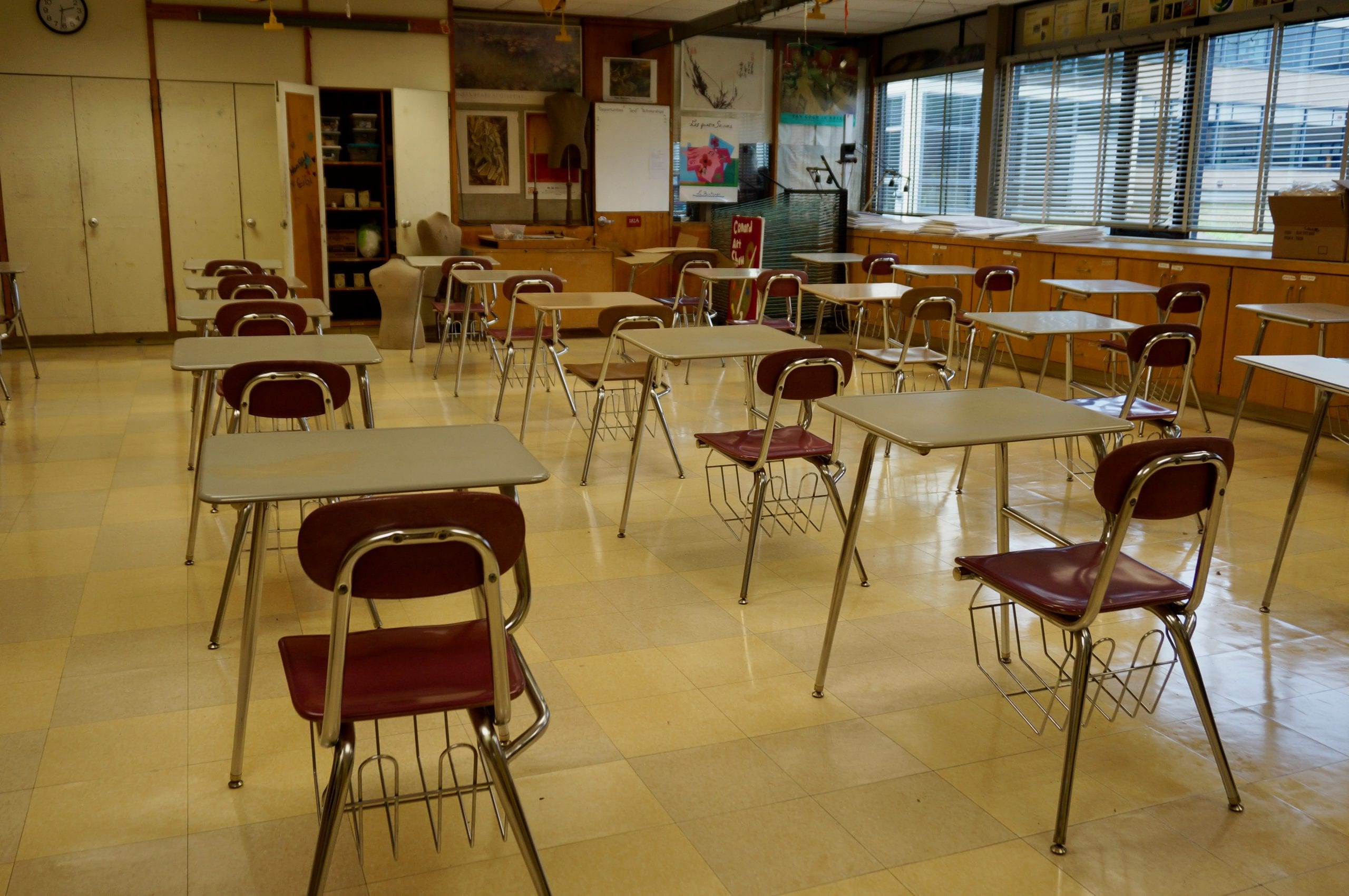State Looks to College Students to Substitute Teach

Audio By Carbonatix

Desks spread apart for greater distancing at Conard High School, replacing tables in this art room. Photo credit: Ronni Newton (we-ha.com file photo)
Most colleges will be shutting down in-person classes at Thanksgiving and not reopening until January or February, creating an opportunity for education-minded college students to serve as substitute teachers where there are shortages.
By Hugh McQuaid, CTNewsJunkie.com
Gov. Ned Lamont’s administration plans to provide school districts with a list of college students eligible to serve as substitute teachers in schools where quarantines have led to staffing shortages, the governor said during a Monday radio appearance.
Lamont briefly discussed the plan during an interview on WNPR’s “Where We Live” in response to a listener question on school staffing shortages. Although he has left the decision up to local administrators, the governor has urged schools to maintain in-person learning for pre-kindergarten through fifth grade students.
However, that goal has been difficult to achieve in many school districts where infections have required large numbers of teachers to self-quarantine and forced districts to compete for substitute teachers. Lamont is hoping education-minded college students will be enough to bridge the gap and permit schools to maintain in-person operations.
“Look, right now a lot of our colleges are going to close down for Thanksgiving and not reopen until February. That gives an awful lot of latitude for some of these young people, who are obviously much less likely to suffer complications, to help out in the classroom,” Lamont said.
“Miguel Cardona, commissioner of education, is making sure a list of those would-be apprentice teachers are available to our school districts, helping them to stay open,” he said.
A spokesman for the Education Department could not immediately say Monday how many aspiring teachers will be on the list provided to school districts. In August, the state eased some of its requirements, giving districts more flexibility in filling teaching vacancies.
Fran Rabinowitz, executive director of the Connecticut Association of Public School Superintendents, said staffing shortages are becoming a widespread problem.
“I see about 100 superintendents a week on area calls and they’re all telling me there are two reasons they’re closing. One, they don’t have staff to cover the teachers in quarantine and two they can’t contact trace fast enough,” she said.
Connecticut Education Association President Jeff Leake estimated that somewhere between six and 12 districts have had to shut down in-person learning operations to some degree due to staffing shortages. Although a concern, he said Connecticut’s staffing problem is actually less severe than in some other states.
Leake said the governor’s plan to enlist student teachers could help to alleviate the issue if the student teachers were used to augment instruction from a traditional teacher who could be teaching remotely.
Student teachers could also benefit from working with students in-person as a quarantined teacher instructs remotely, Rabinowitz said.
“The service they would provide would be invaluable,” she said. “During COVID I try my best to look for silver linings, I think this could be one of them. This could be a great help to districts and our kids and at the same time it would be a great experience for them.”
But the plan also raises health concerns, Leake said.
“Given what’s happening on college campuses, do we want to send those college students into schools, not knowing their own sensitivity or whether they have been infected? That could be a problem,” he said. “Are we sure that they’re not bringing something from their college experience into the schools? Clearly, that would be problematic.”
During the Monday radio appearance, the governor outlined some protocols for returning college students which he said he and the governors of New York, New Jersey, Pennsylvania and Delaware discussed over the weekend.
Lamont said Connecticut and other states in the region will require returning students to be tested before they return to the state by plane and show negative test results when they arrive. They will also be asked to take a subsequent test after returning, the governor said.
“We’d like you to take a second test just to make sure when all the kids are coming back from all over the country we’re not kicking open a COVID hornets nest,” he said.
Republished with permission from CTNewsJunkie.com, all rights reserved.
Like what you see here? Click here to subscribe to We-Ha’s newsletter so you’ll always be in the know about what’s happening in West Hartford! Click the blue button below to become a supporter of We-Ha.com and our efforts to continue producing quality journalism.



